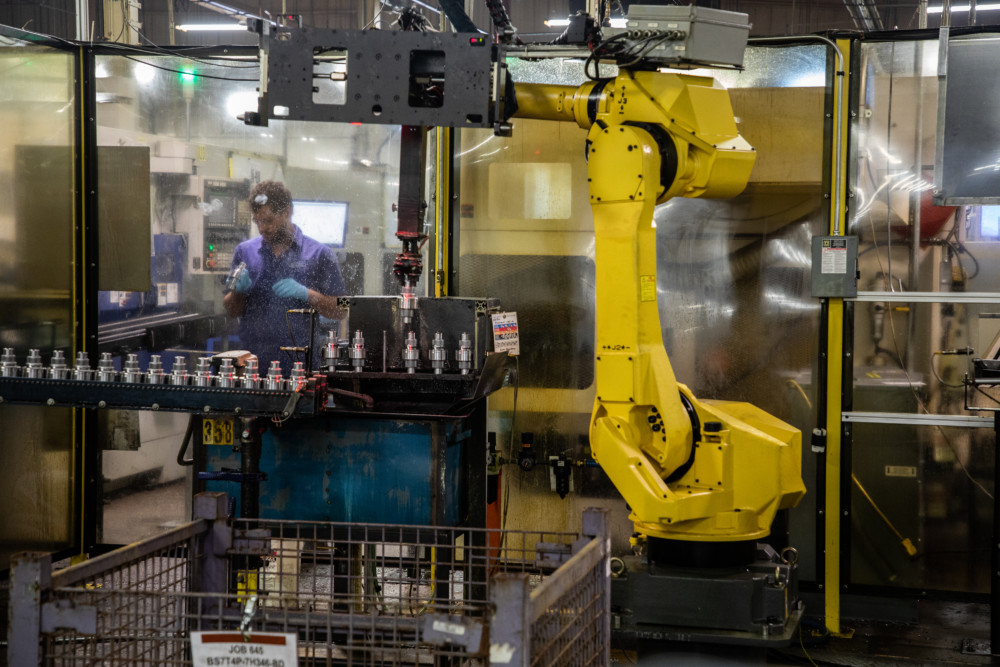By Hojun Choi
The Herald Banner, Greenville, Texas
WWR Article Summary (tl;dr) One Texas community is coming together to find ways to better prepare students for the future. At a recent seminar on the topic, Randy Pennington, a local entrepreneur, spoke about the benefits of teaching students how to build human relationships in this digital world. He also emphasized the importance of teaching students how to be versatile, and the dangers of being pigeon-holed into a career that could be impacted by automation and other new developments.
Greenville
Preparing students for a job market that is nervously awaiting the full brunt of automation is not always a fun job for public educators.
And in more rural parts of the country like Hunt County, school districts are facing additional challenges stemming from new population trends.
The World Economic Forum in 2018 published a report based on data provided by more than 300 different companies around the world from a variety of industries. More than half of the companies estimated that automation will “lead to some reduction in their full-time workforce by 2022.”
The Texas Rural Funders Collaborative, a partnership between health, community and private foundations, was established with the mission of conducting research to identify and address the needs of rural populations.
According to a study published by the group in 2018, rural communities already had higher unemployment and uninsured rates, along with an average annual wage $14,000 below the state average of $54,000.
And as the bedroom communities around the larger cities grow, school districts are finding new challenges related to accomodating for that growth with the resources available to them.
To better prepare for a job market that could be challenged by new technologies, the Greenville Independent School District organized a meeting earlier this year to address how educators could work with local businesses to better prepare students for the future.
Randy Pennington, an entrepreneur, author and public speaker, a Greenville High School alumnus, led the February workshop at the Fletcher Warren Civic Center.
The seminar invited teachers and local business leaders to share their thoughts on how to better prepare students.
Pennington, in a conversation with the Herald-Banner after the meeting, said public educators have to accept that big changes are coming, and spoke about the benefits of teaching students how to build human relationships in a more digital world.
He also emphasized the importance of teaching students how to be versatile, and the dangers of being pigeon-holed into a career that could be impacted by automation and other new developments.
“Would it be responsible for us to continue doing what we’re doing today in 2035?” Pennington asked workshop participants.
Superintendent Demetrus Liggins acknowledged that the growing prevalence of technology is always on the minds of educators who wish to prepare their students for the future.
“We have kids in the district now that are going to graduate in the 2030s, we also have kids that are in high school that will graduate in the next couple years, so it’s a challenge,” Liggins said.
Administrators have also told the Herald-Banner that they are strengthening its relationship with the city’s board of development in hopes of fostering a healthy local economy while connecting students with local businesses.
Greenville ISD is the largest district in Hunt County in terms of student population — audited
reports showing a total of 5,469 students in the 2017-18 school year — followed by Quinlan ISD, which had 2,628 students.
Quinlan ISD Superintendent Jeff Irvin said Career and Technology Education, or “CTE,” courses are a big asset to rural schools, as they provide certifications for various industries, ranging from agriculture, business information as well as health tech.
“QISD has a strong focus on offering CTE courses that will allow students to immediately enter the workforce upon graduation,” Irvin said.
He told the Herald-Banner that the district will offer Emergency Medical Technician certifications through its health science program next year. It will also add a entrepreneurship and small business certification course under its business management and fashion design program.
“While being smaller and not funded at the same level as schools closer to major cities, we offer courses and certifications that will help QISD students be college or career ready when they graduate high school,” Irvin wrote.
And in even smaller districts like Campbell ISD, located less than ten miles east of Greenville, trying to maintain the quality of the district’s existing programs is a constant challenge.
Due to its small population, estimated to be around 600, the district receives most of its operating funds from state appropriations. According to Texas Education Agency reports, the district had 327 students during the 2017-18 school year.
Because of financial restrictions, Campbell ISD Superintendent Denise Morgan said funding programs are getting increasingly difficult.
She, like Irvin, said CTE courses play a large role in allowing students to explore their options for their future after high school. She said it also helps build skills that benefits students, regardless of their career decisions.
Classes like cosmetics and mechanics, under the umbrella of CTE, had been promoted by the state through allotments in previous years.
As some of these funds were reduced, however, Morgan said many school districts that depended heavily on special allotments for CTE programs have struggled to keep them afloat.
“People didn’t continue to buy the materials they needed to keep those programs running because they didn’t have the funds,” Morgan said. “Adding those programs back is costly.”
Morgan said Campbell ISD will continue looking for local business that it can partner to provide students a chance at exploring their career options. She added that school districts in Hunt County have also started to work with one another.
Campbell ISD students, for example, currently take welding classes in Commerce during the mornings. Through identifying each district’s strengths, Morgan said educators have the potential of coming up with creative solutions for offering students programs that would otherwise not be available.
“We’re constantly trying to think out-of-the-box,” she said.














































































































































































































































































































































































